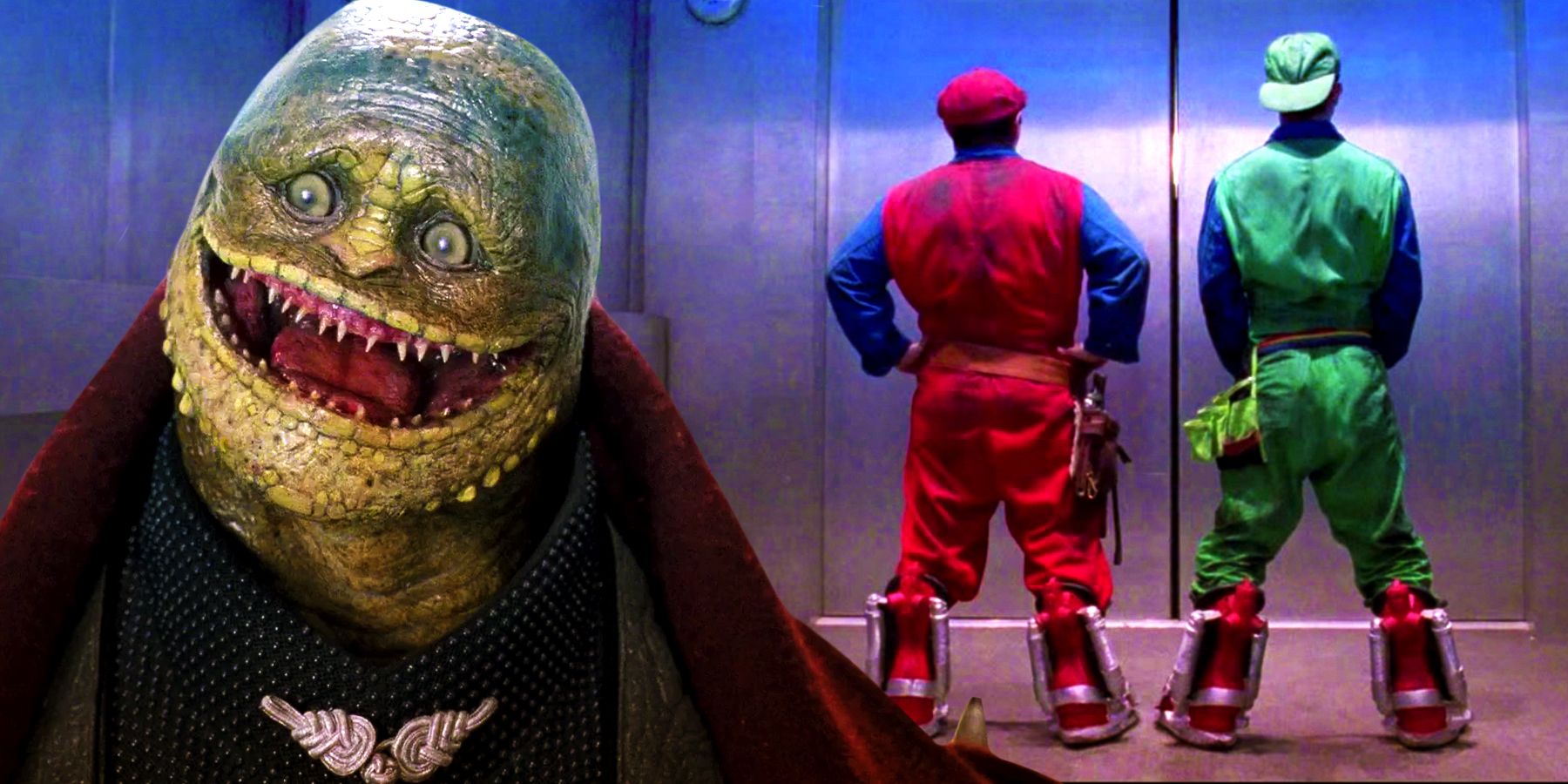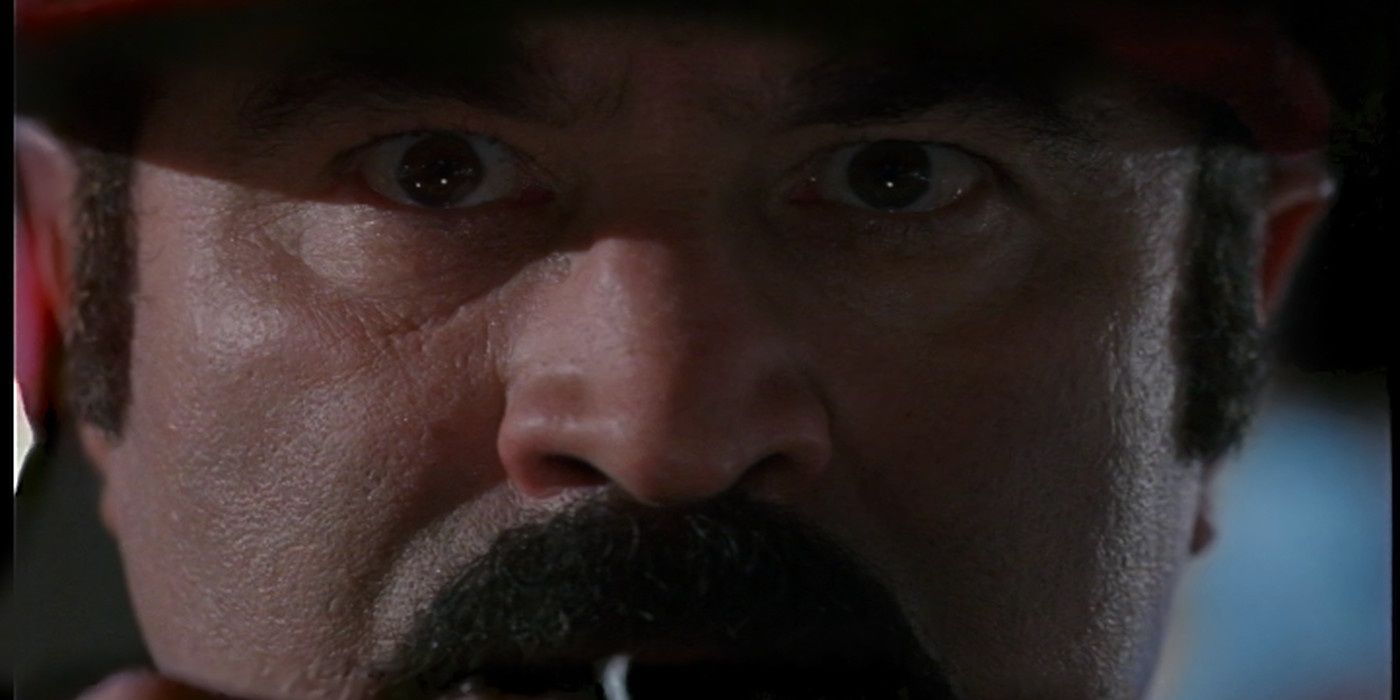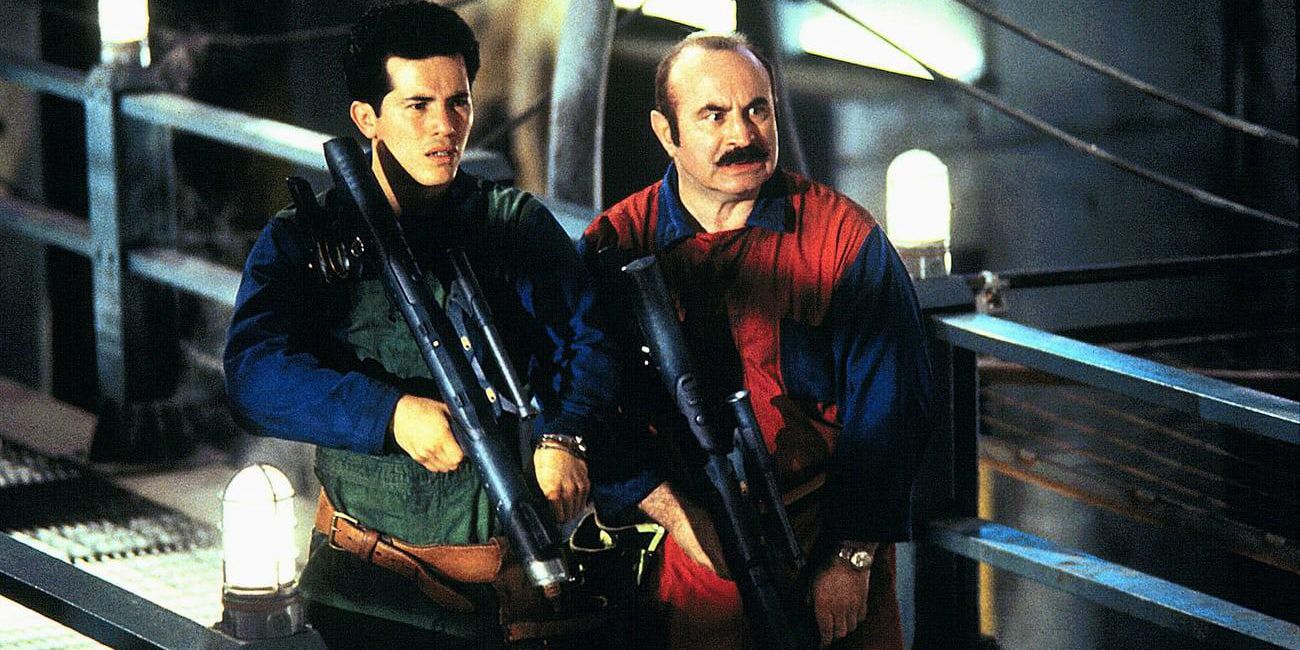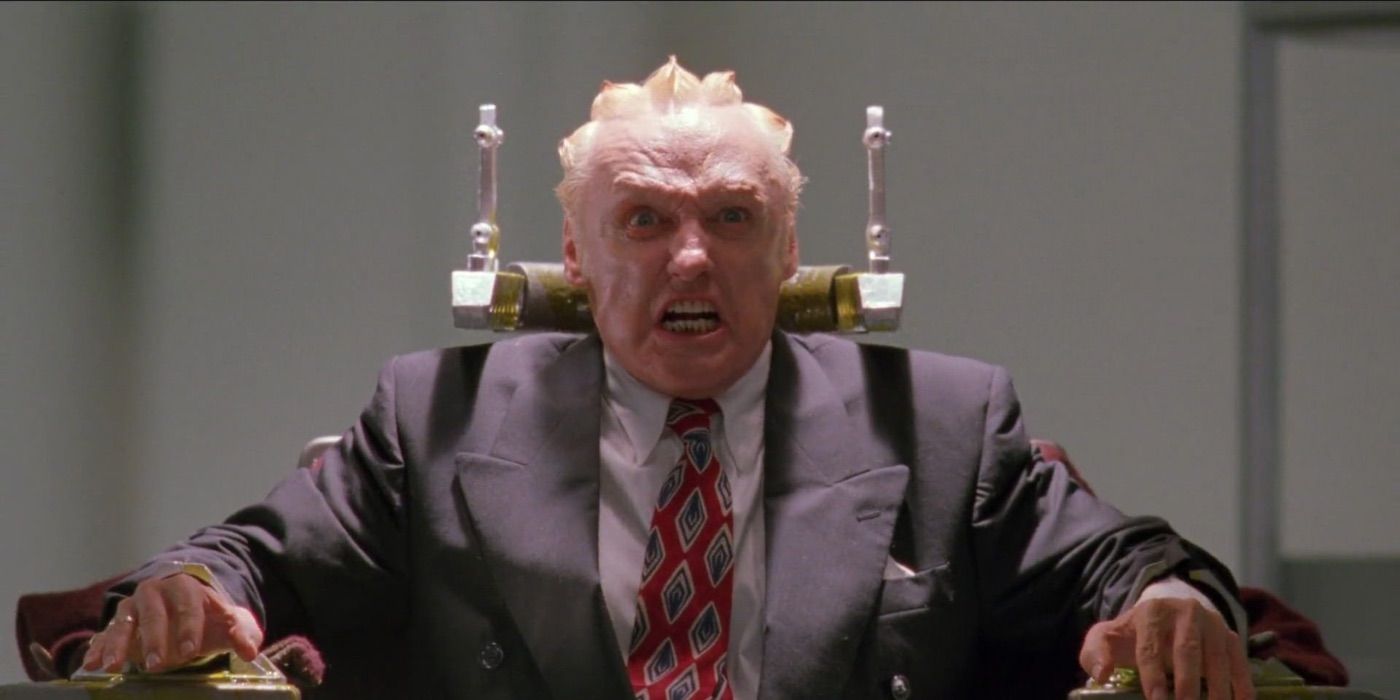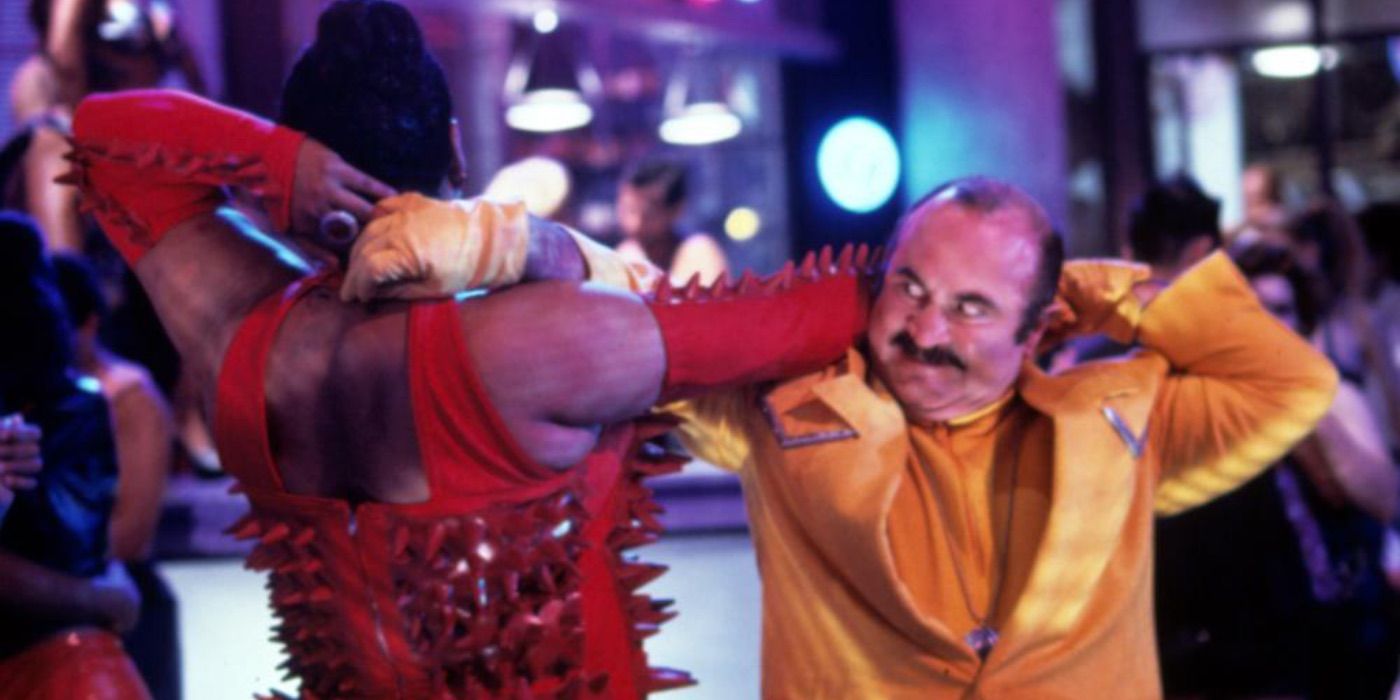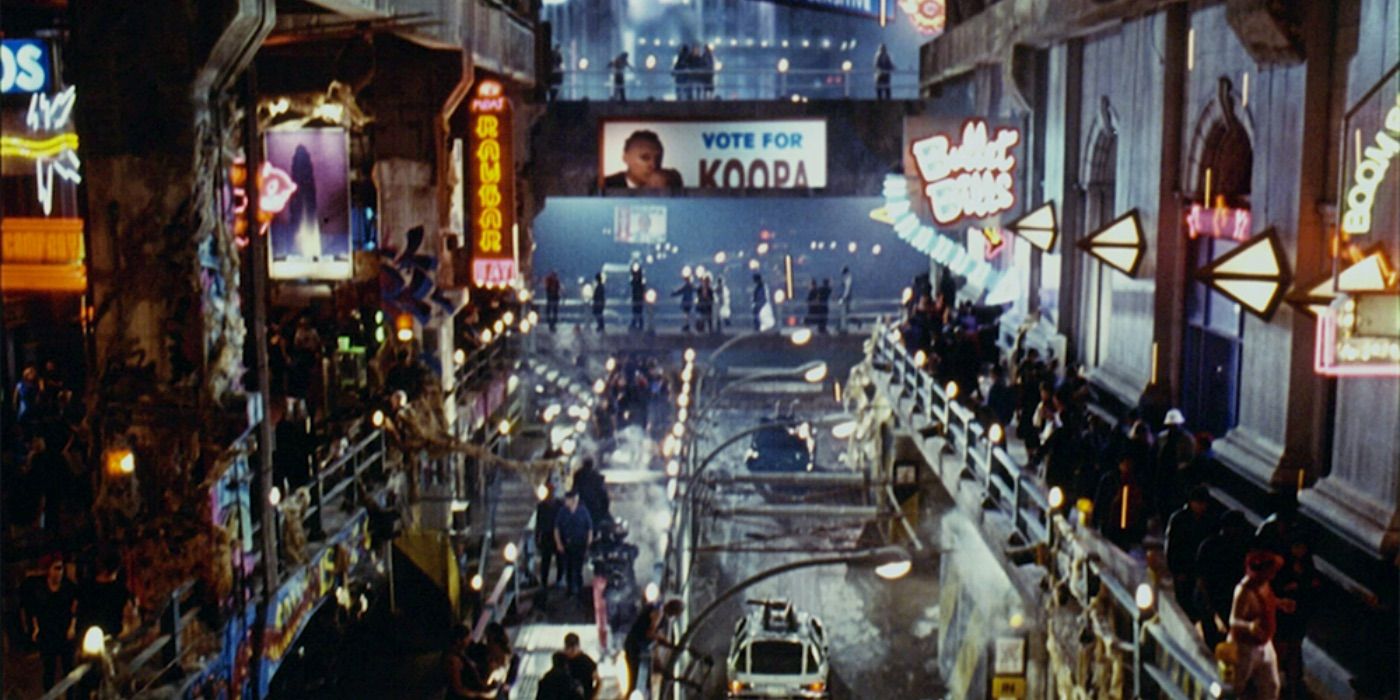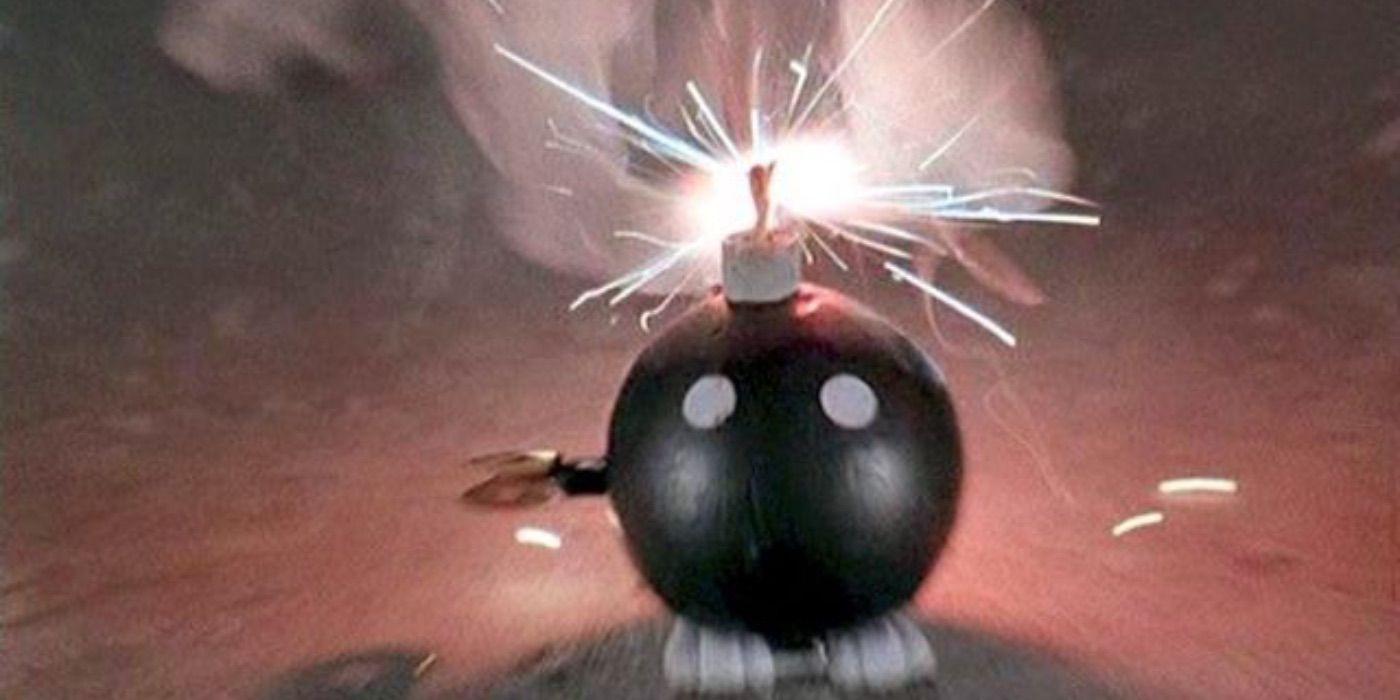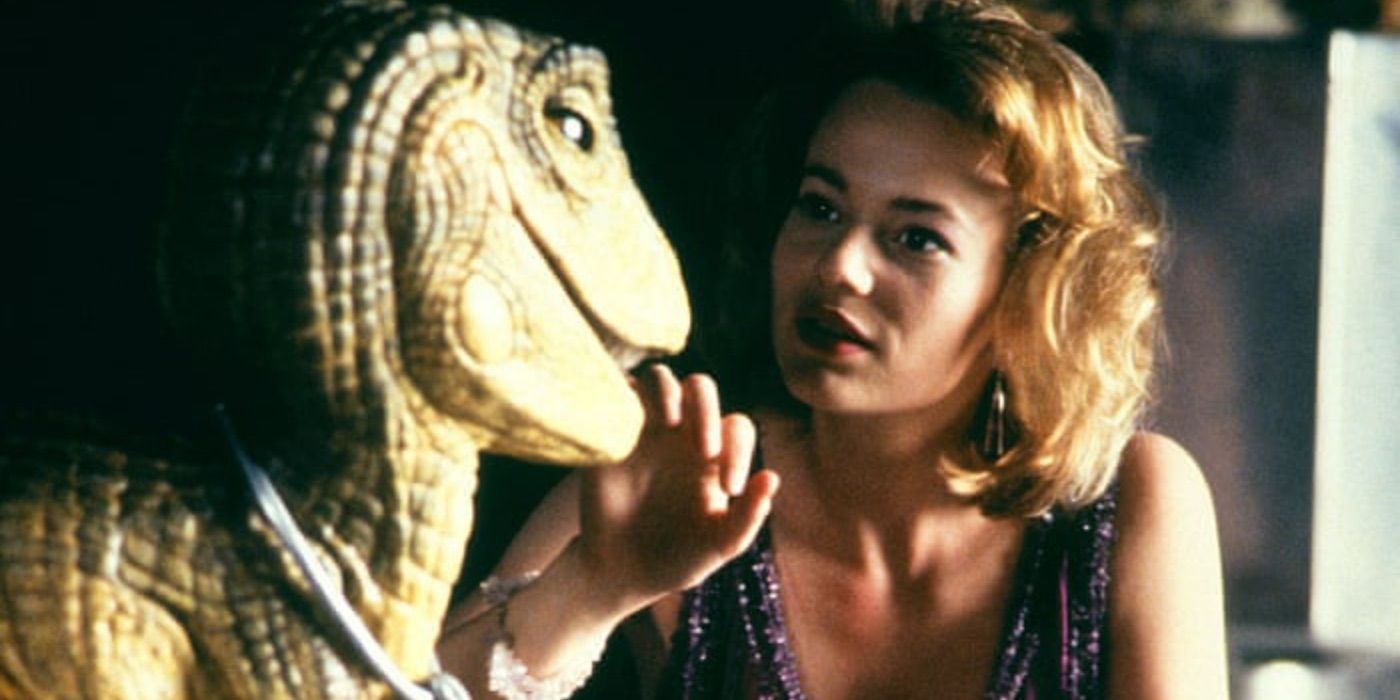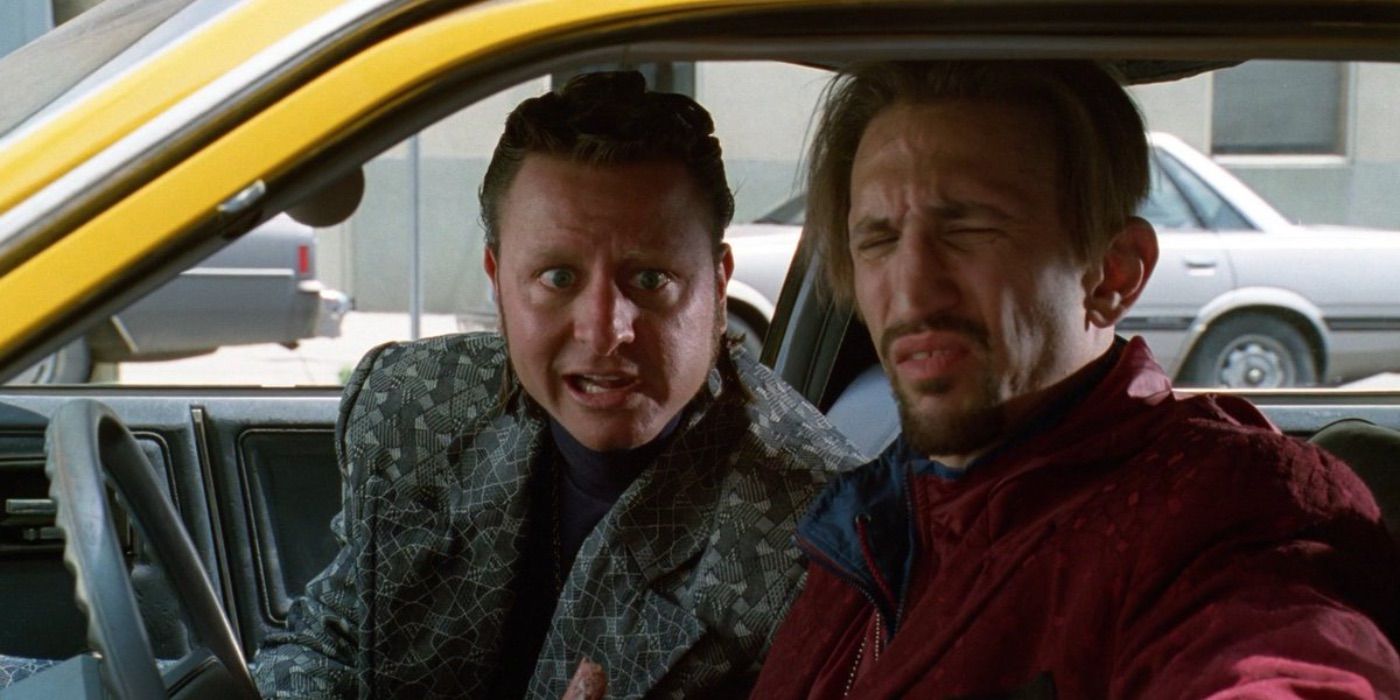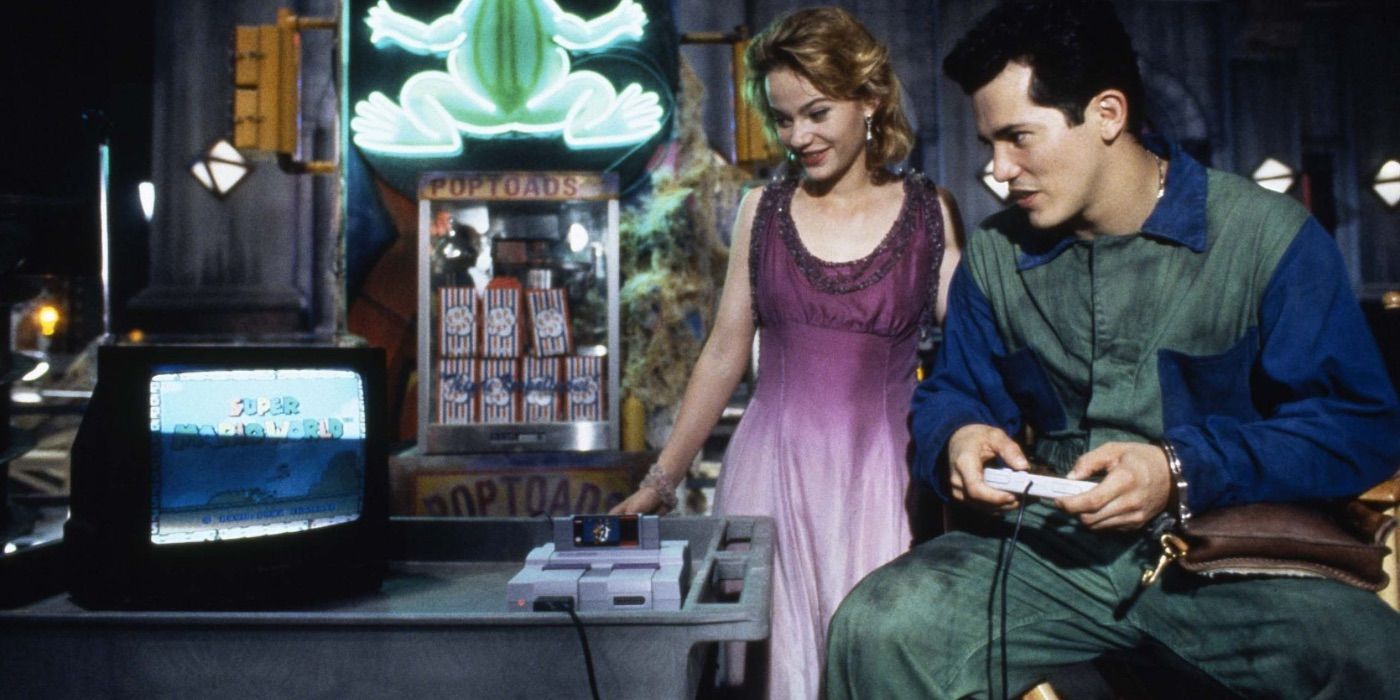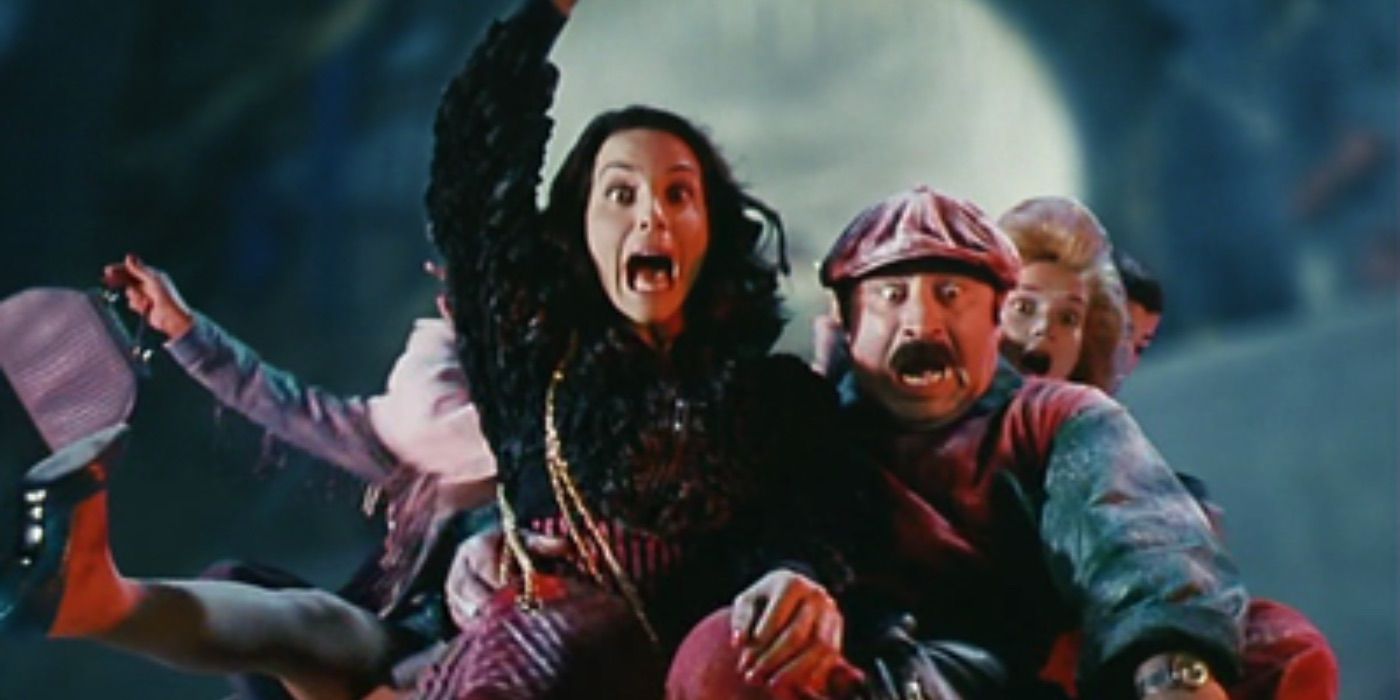1993's Super Mario Bros. is widely regarded as one of the worst video game adaptations of all time; it's also the first. With the release of The Super Mario Bros. Movie (2023), many fans have revisited the former iteration of the mustachioed plumber in an attempt to see where it all went wrong.
While anyone would be hard-pressed to argue the 1993 film's status as a classic, there are many wonderful aspects that have needlessly been overlooked – from its over-the-top special effects to era-specific stylization, and costume design, to a pitch-perfect curmudgeonly performance by Bob Hoskins.
Updated April 12, 2023, By Howard Waldstein: Mario fans are an ardent lot. Which is to be expected of a near-ubiquitous character who has remained a consistent part of popular culture since appearing in 1981's Donkey Kong arcade platformer. With The Super Mario Bros. Movie (2023) now in theaters, it feels like an opportune moment to set the record straight about the controversial 1993 adaptation.
11 Bob Hoskins Brought Personality To Mario
Some might say, "Not my Mario!" and they'd be perfectly well within their rights to believe that the 1993 Super Mario Bros. is not how they envisioned the iconic character. By this point in 1993, most audience members were going off of the myriad games that featured the hero (as either star or in a cameo role), and the poorly animated TV series, but never had a 3-Dimensional version of the character to scrutinize.
Enter Bob Hoskins, who brought gravitas to such diverse roles as a hardboiled PI with a toon problem (Who Framed Roger Rabbit), Captain Hook's right-hook man, Smee, a gangster looking to go legit (The Long Good Friday), and many more. As Mario, the actor brought his usual gruffness, exaggerating certain traits just enough to border the comically ludicrous and serve as a perfect foil to his brother, Luigi.
10 John Leguizamo Is A Great Luigi
Before nabbing the part of Luigi, John Leguizamo was performing on the comedy circuit, and appearing on Miami Vice. His film roles, at this point, were small, but all that changed when he was put front and center in Super Mario Bros. The street-wise, Colombia-born New Yorker was given room to show all of his lived-in mannerisms.
He could be the slick, backward hat-wearing younger Mario Brother and a charming romantic all at the same time. Later, the same year, the actor appeared in one of his most iconic roles, Benny Blanco from the Bronx in Brian De Palma's Carlito's Way, solidifying him as an up-and-comer to keep an eye on.
9 The Costume Design
Whether it's King Koopa's (Dennis Hopper) bleached cornrows or the human version of Toad's spiralized rockabilly hairdo, there are plenty of details that linger in viewers' minds – although some might say for the wrong reasons. On top of wacky 'dos, the garish wardrobe is akin to the type found in the new-wave sci-fi novels of Philip K. Dick, and various cyberpunk novels that seem to care very little for whether things "match."
This might sound like a criticism, but it's this earnest embrace of silliness that provide the texture for a believable dystopia. After all, this isn't our world, but a parallel universe in which dinosaurs were given the opportunity to evolve without hindrance. With blink-and-you'll-miss-it details coming a mile a minute, there's much to admire, but it's the Mario Brothers' Thwomp Stompers –those futuristic boots that provide game-like jump mechanics – that take the cake.
8 The Go-For-Broke Storytelling
Between the lo-fi animated introduction explaining how a parallel universe came to be, and a human child hatching from an egg, Super Mario Bros. is a lot to take in – and it's not even two minutes into the movie. While the thought of two Italian plumbers from Brooklyn traveling to a different world might seem absurd, it's precisely because it's so weird that it's refreshing.
By providing a narrative where only a threadbare one existed in the games, Super Mario Bros. had free rein to make and break its own rules. Where The Super Mario Bros. Movie (2023) shamelessly provides non-stop fan service, the 1993 film feels like an anomaly that could only exist because its era allowed for an unstable blend of camp and grit to coexist, and not think-tanked into a guaranteed success.
7 The Soundtrack Is Fantastic
Super Mario Bros. features several stand-out tracks, from the new wave vibes of Divinyl's cover of Roxy Music's "Love Is the Drug," to the primordial funk of George Clinton and the Goombas' rendition of the Was (Not Was) hit "Walk the Dinosaur." Roxette's "Almost Unreal," which plays over the end credits, is a fittingly corny pop ballad that seems to perfectly true to form in going against the grain of what to expect.
Additionally, the original score by Alan Silvestri is full of great moments; in one scene, it conveys the madcap glee of two plumbers throwing a wrench into the totalitarian dino regime; in another, we hear a foreboding theme reminiscent of John Williams. It's this blending of pop sensibilities and classical arrangements that create a rich backdrop for the movie's visuals. And keen-eyed fans will note that Toad is played by psychobilly rocker/DJ, Mojo Nixon.
6 The Set Design
Like Terry Gilliam's Brazil (in which Bob Hoskins appeared), Ridley Scott's Blade Runner (on which, production designer David Snyder worked), Paul Verhoeven's Total Recall, and a plethora of other gritty 80s and 90s genre-blenders, Super Mario Bros. is all about dingy, lived-in believability. While the exact ins and outs of how the society works might be confounding, it can be fairly assumed that each of the aforementioned worlds exists at the tail end of extreme avarice and greed, in which the few that get rich remain cloistered in their palaces, while the average citizens toil in the muck and the mire.
While the film may have fared better both critically and commercially had it embraced the blue skies with pristine white clouds of the games, it's because of the abrasive, fungi-laden imagery that viewers gain a real sense of the social fabric of Dinohattan. No, it's not realistic, but it tells us everything we need to know, and provides ample opportunities for things to blow up.
5 Easter Eggs Galore
While Super Mario Bros. can be enjoyed by anyone, regardless of whether they've played the video games, there are allusions to the franchise that fans will certainly appreciate. Some references are obvious, like the Bob-omb, while others are there for eagle-eyed fans, such as the Shy Guy guards and the shape of the hallways in Koopa's Tower resembling Thwomps.
While the established lore is largely disregarded by the film, it's still great to see tiny details, like a sign for the Koopahari Desert, making an appearance. It's because of this fast-and-loose handling of the Easter eggs that the nods to the game don't overcrowd and stymie the story; they work as part of the world, but feel more in service of, as opposed to the other way around.
4 The Special Effects Work
From Yoshi's sweetly benign presence to the disgustingly warm presence of Daisy's father, who has been turned into a sentient fungus spreading throughout the city, the special effects team created a world in which anything can happen – and likely will. Additionally, Super Mario Bros. is the first film to use Autodesk Flame, an image-compositing software that would later be adopted by other mainstream releases.
While there are plenty of frilly edges, it's the handmade quality of the film that gives it a tactile reality. There is no overreliance on any one method. Instead, it's a grabbag of tricks that moviegoers take for granted in the wake of CGI-heavy releases.
3 The Supporting Cast
However silly the Super Mario Bros. storyline may seem, the actors commit wholly to the bit. By embracing the admittedly quirky material, power players like Dennis Hopper are able to turn in performances that both honor the material and provide a wry node to the wary viewer.
Other character actors, like Fisher Stevens and Richard Edson, who play the hapless cousins of King Koopa, Iggy and Spike, seem to be having fun twitching and bumbling their way through the scenes like devolved versions of C-3PO and R2-D2. Last, but certainly not least, Samantha Mathis, as Princess Daisy, provides the emotional backbone for a story that always borders on veering off the rails but is kept in check by game performers.
2 The Movie Broke New Ground For Video Game Movies
Super Mario Bros. is the first film to be adapted from a video game. It goes without saying that this is a trend that evolved in ways that no one could have predicted. Nowadays, Resident Evil, Sonic the Hedgehog, and even Angry Birds can comfortably release films that no one bats an eye over. Ignoring the efficacy of the adaptations, or whether certain ones should have been made to begin with, we now live in a world in which game-to-film adaptations are the norm.
While many diehard Mario fans might take umbrage with the fact that the 1993 film disregards many of the game's most iconic elements, it still represents an exciting moment when fidelity to the material wouldn't just provide a beat-by-beat list of expectations. For what it's worth, at least viewers have something to chew over.
1 The Movie Was (And Still Is) Fun
Above all else, Super Mario Bros. is a fun, wild ride that never lets up. There are no moments that drag, only a relentless stream of scenes that each offer opportunities for scrutiny, consideration, mindless enjoyment, and, of course, a spate of baffling questions. For some, it is the duty of a film to provide some imagined list of expectations that can only exist once a person has seen a movie and knows what they don't like about it.
For any "true" Mario film, there will never be a consensus that works. Instead, like MCU's forgotten promise of the Multiverse, there are ample opportunities for multiple Mario iterations to exist, none stepping on the toes of the other, each having their own merits and varying degrees of appeal. No one-size-fits-all version will retain the human touch that makes the 1993 film possible, and it's a miracle that something so absurd can even exist.

